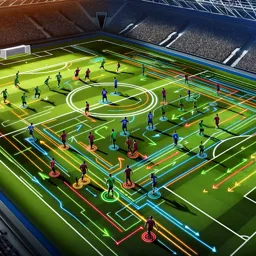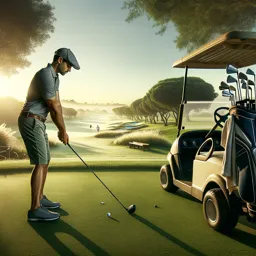Tennis is as much a mental game as it is a physical one. Knowing how to outsmart your opponent with clever strategies can often make the difference between winning and losing. In this article, we’ll explore key strategies that can help you anticipate your opponent’s moves, take control of the match, and outmaneuver even the toughest players.
1. Exploit Your Opponent’s Weaknesses
Every tennis player has a weakness, whether it’s a less reliable backhand, slow footwork, or trouble handling high balls. A good strategy is to identify these weaknesses early in the match and then exploit them consistently.
How to Spot Weaknesses:
- Watch your opponent during warm-up or the first few games to see how they handle different shots.
- Target their weaker stroke (e.g., if they struggle with backhands, aim your shots to their backhand side).
- Pay attention to how they react to different ball heights, spins, and speeds.
Pro Tip: Once you identify a weakness, build points around that flaw, such as consistently serving to their backhand or forcing them to run to the net if they’re uncomfortable with volleys.
2. Vary Your Shot Selection
Predictability can be your downfall in tennis. A key strategy is to keep your opponent guessing by varying your shot selection. This includes mixing up shot types like topspin, flat shots, slices, and drop shots.
Shot Variation Strategy:
- Topspin Shots: Use topspin to keep the ball high and deep in the court, pushing your opponent back.
- Slice Shots: Add slices to slow the pace and make it harder for your opponent to attack.
- Drop Shots: Surprise your opponent by drawing them into the net with a drop shot, especially if they are playing far behind the baseline.
- Lob: Use a lob when your opponent rushes the net to keep them off balance.
Pro Tip: Change the pace and spin of your shots frequently to disrupt your opponent’s rhythm and force errors.
3. Control the Center of the Court
Dominating the center of the court gives you control over the match. From this position, you can dictate play, cover both sides of the court easily, and make your opponent run more than you.
How to Control the Center:
- Always recover to the middle of the baseline after hitting a shot.
- Keep your shots deep and toward the center of the court to minimize the angles your opponent can create.
- Use crosscourt shots to push your opponent wide, and then follow up with a down-the-line shot to exploit the open court.
Pro Tip: By controlling the center, you limit your opponent’s options and make it easier to anticipate their next shot.
4. Anticipate Your Opponent’s Next Move
Anticipating where your opponent will hit the ball next allows you to react faster and get into a better position. To do this, pay attention to their body language, racket position, and movement patterns.
Anticipation Tips:
- Body Position: Watch your opponent’s body position. If they’re leaning one way, they’re likely to hit the ball in that direction.
- Racket Angle: Pay attention to the angle of their racket. For example, an open racket face may indicate a slice or a drop shot, while a closed face may suggest a topspin shot.
- Shot Patterns: Notice if they have any tendencies, such as always hitting crosscourt on certain shots, and anticipate accordingly.
Pro Tip: Stay alert and adjust your positioning before your opponent makes contact with the ball, giving you a head start on your next move.
5. Use the Serve to Set Up Your Attack
Your serve is one of the most important weapons in tennis. A well-placed serve can not only give you easy points but also set up your next shot for a winning rally.
Serve Strategy Tips:
- Vary Placement and Speed: Keep your opponent guessing by alternating between serves down the T, wide serves, and body serves. Mix in powerful flat serves with slower, more controlled spin serves.
- Second Serve Tactics: If your opponent struggles with returns, use your second serve as an opportunity to attack rather than just getting it in.
- Follow-Up Attack: After a strong serve, follow up with an aggressive shot to put your opponent on the defensive immediately.
Pro Tip: Pay attention to your opponent’s return position and adjust your serve placement accordingly to keep them off balance.
Conclusion
Outsmarting your opponent on the tennis court requires more than just physical skill—it’s about playing strategically, reading your opponent’s weaknesses, and making tactical decisions. By varying your shots, controlling the center of the court, and anticipating your opponent’s next move, you can gain the upper hand and dictate the flow of the match. The more you incorporate these strategies into your game, the more likely you are to outthink and outplay your opponents.

































